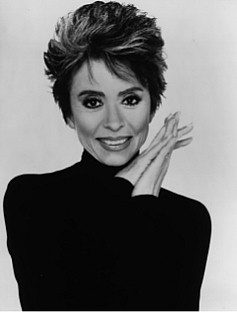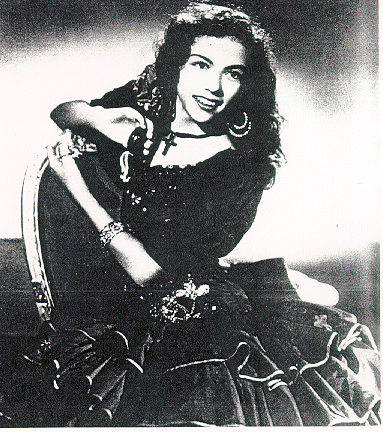
In 1979, Rita Moreno was entered into the Guinness Book of World Records as the only performer to win all four of the top entertainment awards; the Oscar, Tony, Grammy and Emmy.
She won her Oscar in 1961 for Best Supporting Actress in the role of Anita in the critically acclaimed 'WestSide Story'. Along with the rest of the cast of the 'Electric Company', she received an Emmy in 1972. The role of 'Googie Gomez' in The Ritz brought her a Tony in 1975 and she won two Emmys...one for guest artist in a episode of 'The Muppets' in 1977 and one for 'The Rockford Files' in 1978 where she played a vulnerable prostitute.
Rita Moreno was born Rosa Dolores Alverio, otherwise known as Rosita, on December 11, 1932, in Humacao, Puerto Rico. She was born to Rosa Maria Mercano, who had married Paco Alverio when she was just a teenager. Alverio's family were jibaros (the name used to refer to the people who lived outside Puerto Rico's major towns and cities. Jibaros valued their independence and strove to be self-sufficient, preferring to grow crops on their own small farms rather than work on the large c offee or sugar plantations of the wealthy) and consequently were very poor.
The Alverio family was touched by the need to survive and looked toward the United States as a land of opportunity. Although, they could not afford for the entire family to move, Rosa Maria was the first to sail to New York in search of work. She would save money and bring the rest of her family later. As many immigrants did in those days, Rosa Maria found work sewing in one of the lingerie factories. She saved money for a year and stayed with her aunt, Tomasita Lopez. When she went back to Puerto Rico, to bring her family back, she only had enough money to bring one of her children, so she brought Rosita with her to " Nueva York ", as they called it. Rosita had shown a greater interest in going to the United States, anyway. She would never again see or hear from her father and younger brother.
Even in a land filled with many promises, Rosita and her mother would have to surpass many obstacles. With the depression of the 1930's many immigrants found themselves living in cramped tenemets houses and working long days just to make a living. Many times they went without water or heat. Not understanding English was another obstacle Rosita would need to overcome.
Not knowing how Rosita would react to her first day at school, Rosa Maria tricked her daughter into going. She took Rosita to a roof garden playground where other children were playing and then told her she was going to buy some gum and not to leave. When her mother arrived at the end of the day, she realized that she had been tricked. She eventually learned to speak English, though there was no bilingual program in the schools in those days. The lack of programs aimed at addressing her special needs reflected her grades in accademic courses. However, her shyness, due to feeling left out, was not an issue outside of class. Whenever there was an assembly or talent show, Rosita was happy to do the Mexican hat dance. A friend of her mother's, Irene Lopez, who was a Spanish dancer, watched Rosita dance and told her mother that she had natural talent and should enroll her in dance class. By this time, Rosa Maria had remarried with a Cuban watchmaker named Enrique Cossio. Between both their salaries and the extra money her mother made by making paper flowers for the Woolworth Company, they barely were able to pay for her classes.
Between the ages of 11 and 15, Rosita dubbed a great number of films that would be sent to Spanish- speaking countries. She worked very hard between school, classes and auditions. At 13, she got her first part on Broadway. At about the same time, her mother had met a Mexican radio personality, Edward Moreno, at one of Rosita' s auditions. She fell madly in love with him and left Enrique to go live with Edward. They eventually married and had a son, Dennis Moreno. The family was now living in a little hou se in Valley Stream, Long Island and Rita was busier than ever.
One day, when Rosita was 13, a talent scout from MGM (Metro-Goldwyn-Mayer) came to the dance studio where she was rehearsing. Before he left, he gave his card to Rosa Maria and within the next several years he would call occassionally to see if Rosita was still performing. At the age of 16, Rostia began work in nightclub, dancing. she put together some dances she had learned with Cansinos, who was still her instructor, and went to work. Rita played up the idea of the " Latin spitfire " because it helped to get her jobs. At about this time, her mother received a call from the talent scout for MGM, who had continued to keep in contact. He had arranged for Rosita to meet with Louis B. Mayer, who was going to be in town.
